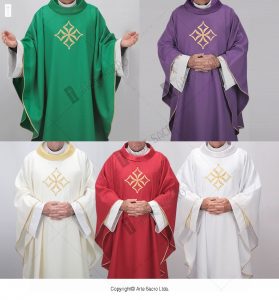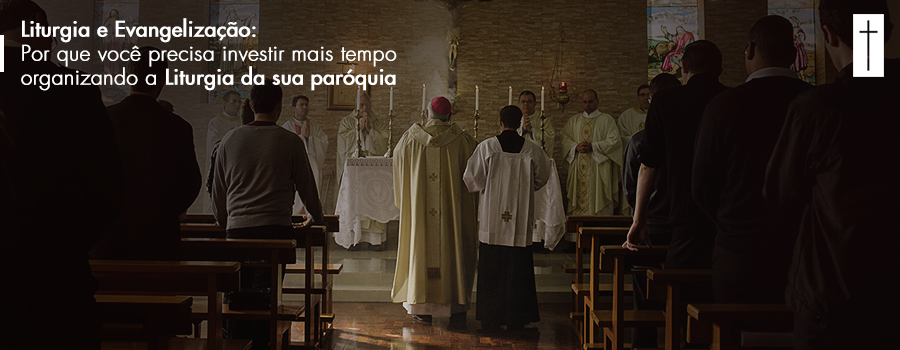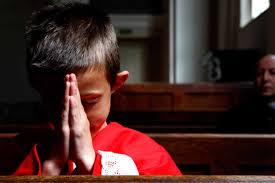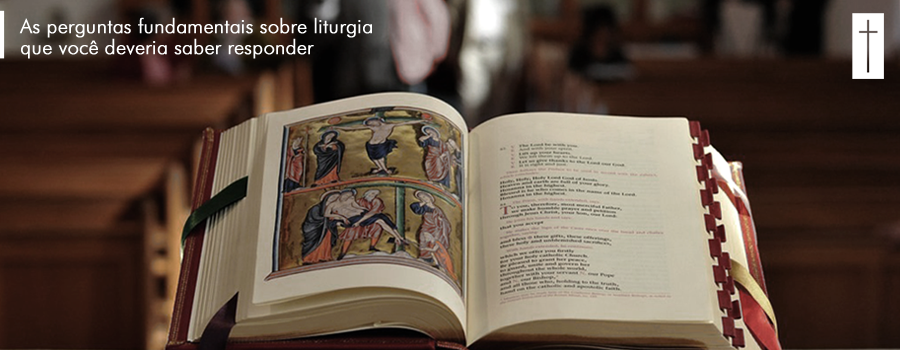10 tips you can’t miss at sachristy
Did you know that the garments worn by the sacred ministers in the liturgical celebrations are of Greek and Roman origin? Some ecclesiastical writers tell that the sacred ministers wore their best clothes, probably reserved for the occasion. “The fact that they [the vestments] are not used in daily life helps us to break with the daily life and its preoccupations at the time of the celebration of the divine cult”, teaches the document The vestment of the liturgical vestments and the respective prayers of the Department of the Liturgical Celebrations of the Supreme Pontiff [1].
So all the zeal and dedication we need to have with this part of the liturgical organization has a foundation and a tradition that are beautiful. With this in mind, we present a special selection of parishes indispensable for your parish. Along with some recommendations, we also put useful information on the spiritual meaning, function or curiosity about the vestment. Check out!
Catedral Chasuble
When it comes to the chasuble, it is understood that the garment is intended for those who celebrate the Holy Mass. “The liturgical books used the two words, in Latin chasuble and planet, as synonyms. The prayer for the garment of the chasuble refers to the invitation of Colossians 3:14: “Above all, clothe yourselves with love, which unites all in perfection.” [2]
The set we present is from the Cathedral Collection, with gold embroidery. There are six pieces in the colors: cream, red, black, green, purple and pink. A differential in this option is the chasuble available in black color, ideal for masses and crafts of the deceased.
Dalmatian Cathedral
Still on the liturgical vestments, the Church teaches why they are usually made in a wide size. “It may be said that the ‘concealment’ of the minister’s body under the garments, in a sense, depersonalizes him by removing the celebrant minister from the center to reveal the true Protagonist of liturgical action: Christ.
In this way, we present a great option for the deacons of your community. The Dalmatian Cathedral Set with gold embroidery. There are five color options (one of each): cream, purple, white, green and red. In addition, of course, a price not to be missed.
Set for Solemnities
In antiquity, what differed the liturgical vestments for the daily clothes was the quality of the fabrics and some details. Currently, although much has changed, Arte Sacro maintains the tradition of selecting the best raw material for the making of its pieces and presents this exclusive option for solemnities.
It is a set with casula and dalmatic that can be separated for the special occasions of the life of your community. Here we have five color options available: red, purple, cream, white and green. Details in gold.
Asperge Cope
Produced with high-quality cream-colored fabric with gold embroidery, this cope can be used while sprinkling the faithful with holy water, in processions and blessings with the Blessed Sacrament, as well as to minister sacraments.
Vestment for the Extraordinary Minister of Communion
This model is unique and was developed especially for women who serve the altar. Available in white color with gold embroidery. Accompany a belt of the same fabric.
 Vestment for the Reader
Vestment for the Reader
Standardizing the reader’s garments may be a good suggestion to avoid overeating the clothes worn at the time of reading. With high quality fabric, available in white and with gold embroidery, it is simple and allows a beautiful liturgical harmony in the presbytery.
Vestment for altar server
A great choice for the altar boys of your community, the red robe in Oxford cloth and white linen overlay is one of the many vestments available to those who serve in the presbytery.
White tunic
Traditional white tunic is made with imported fabric of high quality. With stitching and perfect finishes, plus a very affordable price.
 Stole hanger
Stole hanger
One of the challenges in organizing sacristy cabinets is how to store the stoles. With this in mind, Arte Sacro has developed an acrylic hanger to store and organize up to four stoles.
Chasuble Hanger
In acrylic, specially designed to dispose the chasuble without marking its fabric. Ideal for use in the sacristy of your community.
The Arte Sacro manufactures its liturgical vestments with sophisticated fabrics of high quality with exclusive embroidery and with all respect to the sacredness that these pieces must contain and send.

 Liturgical Team in communion with the other pastoral
Liturgical Team in communion with the other pastoral
